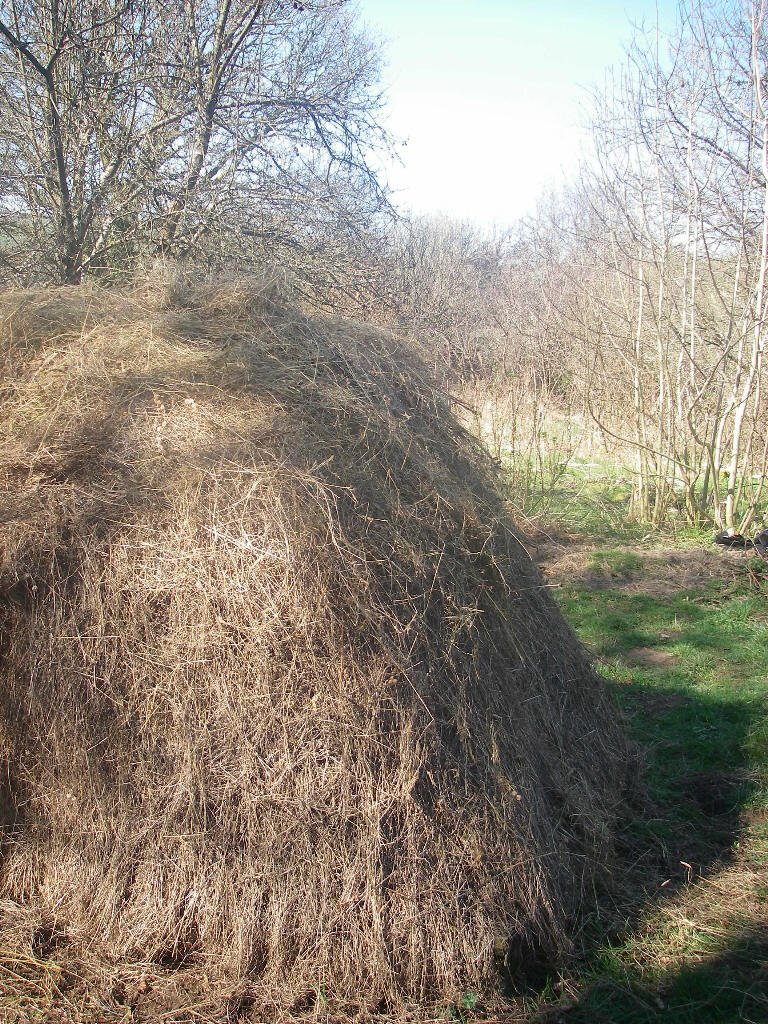Last summer, after filling the barn with hay we built an outdoor hay stack. (See here). Here it is when freshly built.
We meant to put a tarp or something over it to protect the top and help it shed water, but we somehow never got around to it. Over the following months, the uncovered stack shrank alarmingly and I assumed it would be half compost by the end of the winter. As it was intended for use as mulch for no-dig potatoes in the spring, I didn’t worry unduly.
Phil has been planting out the bulk of our potatoes over the Easter weekend using hay from this stack. I was very pleasantly surprised when he called me over to have a look at the inside as he took it down.
The very outer layers were bleached and weathered, while just below the top there was a layer of mouldy hay. A few inches further down however, the hay was dry and good. The damage went deeper on the SW side of the stack that is most exposed to the weather, but the vast majority of the hay was perfectly good for animal feed and the quality increased towards the bottom of the stack.
Like on the hay racks we use in the summer, the outer layers formed a good enough thatch to protect the rest of the stack. When outdoor ricks were the primary way of storing hay they were much larger then the one we built. With a smaller surface area to volume ratio, I imagine the percentage loss of hay to weathering etc would be less. We have seen many historical pictures of outdoor hay racks, from relatively small ones outside of Irish cottages to enormous ones on large farms in the south of England
Iris, the Shetland cow, could see Phil taking the stack apart and her insistent mooing suggested that she thought it smelt and looked perfectly edible!
Potentially we could have increased the yield of good hay by covering the top of the stack, but all in all, a surprisingly good out come to the Outdoor Haystack experiment.






